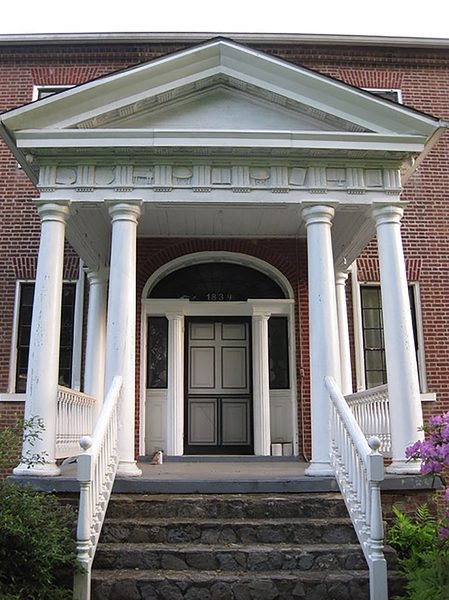1835 Loretto Female Academy
Posted on March 1, 2021, by Joy Jensen SL

Photo by Donna Mattingly
Charles Nerinckx set a high standard in education for the Sisters of Loretto. His “progressive spirit animated the Sisters, and foreseeing that more than primary branches would be called for in their schools, they prepared for the exigency.” So, in the late 1820s the Sisters of Loretto went back to school.
The sisters went to St. Thomas in Bardstown to master physics and chemistry from Rev. Ignatius A. Reynolds of St. Joseph’s College, also in Bardstown, Ky., “while other professors had prepared the Sisters in rhetoric, composition and literature. They procured pianos and engaged teachers; a Swedish pianist and later a French lady, Miss Herminie Gruit, a pupil of Henri Herz who gave lessons on the piano, harp and guitar. Professor Colliere, a distinguished opera singer, gave the Sisters vocal lessons. Father Fouche taught them French, bookkeeping and higher mathematics. A portrait painter from the East taught them painting. In 1829 the Institution was incorporated under the laws of Kentucky…” as a Literary and Benevolent Institution.1
Built in 1834, the new Loretto Female Academy (the present Rhodes Hall) was constructed in the Greek revival architectural style. From 1830 on, Greek revival was the accepted architectural style for educational institutions, as well as for Southern-columned plantation homes. Builders relied on architectural guides such as “The American Builder’s
Companion” and “Practical House Carpenter.” Accordingly, Loretto Female Academy boasted a Greek revival portico with columns that had a triangular pediment over the portico. Portico panels with reliefs of the subjects taught were advertised on the portico.
In 1836 Loretto Female Academy advertised in Louisville’s Courier-Journal: “The Loretto Institute and Benevolent Institution is on the road from Bardstown to Lebanon… . The site is beautiful and healthy: the buildings elegant and sufficiently capacious for the accommodation of 150 pupils.”
The “terms” for the session were as follows:
- Board per session, of five and a half months, $35.00.
- Tuition in Reading, Writing, Arithmetic, English Grammar, Plain Sewing, per session, $6.00.
- Tuition in Geography, with the use of Maps and Globes, Fancy Needle-work, Embroidery, Beading, Drawing and Painting, Rhetoric, History, Botany and Philosophy, including the lower branches, $10.00
- Extra charge for Music and the use of Piano, per session, $15.00.
- Extra charge per session for Dancing, per quarter, $10.00.
- The French language, per session, $15.00
Most of the students were middle class. Some were orphans or poor, and some were from wealthy families. The Loretto Female Academy continued until replaced by the 1888 Loretto Academy. The Female Academy later became the novitiate and is currently an art museum with sculptures, paintings and other works by retired Community artist Jeanne Dueber.
1 A. C. Minogue, p. 165
Sources: A.C. Minogue, “Loretto: Annals of the Century”; The Courier-Journal, Aug. 4, 1836; Loretto Community Archives and Museum; Virginia Savage McAlester, “A Field Guide to Identifying and Understanding American Domestic Architecture”
